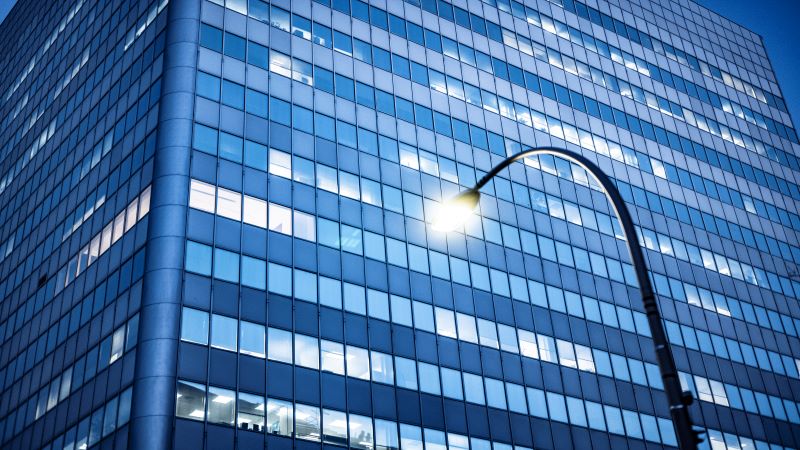Energy plays a peculiar role in society as both central to our well being and largely ignored.
It is an essential component of daily life which most people do not engage with, safe in the expectation that it will always be there at the flick of a switch or reliable click of a gas hob.
In Europe, this has dramatically changed over the past couple of years due to the precipitous rise in energy costs for both households and businesses. This shift has many causes, but was stoked by global forces, such as the post-Covid-19 economic recovery and the war in Ukraine.
Between the first half of 2021 and 2022, the cost of natural gas increased across almost all households in the European Union. There are some notable variations, from a 154% increase in Estonia to 9.8% in Portugal, but with an average increase of 35% across the bloc.
And Europe is not the only place affected; US consumers have faced double digit increases in their electricity and gas bills over the past 18 months.
This means that energy suddenly matters a lot more to millions of people who are facing unsustainable increases in their monthly bills. Energy security has always been a political issue, but recent months have led to permanent changes in energy policy in both Europe and North America.
Climate investments
In 2022, the United States passed the landmark Inflation Reduction Act, which earmarked almost US$ 400 billion in spending on clean energy. This move, according to the White House, will be “the single largest investment in climate and energy in American history”.
Signify, a global leader in lighting innovation, believes that Europe should respond by embedding clean energy as a core component of national budgets.
While the US has laid down the gauntlet by offering generous subsidies to domestic and foreign companies, these incentives have a shelf life. Placing energy security under a government’s annual spend could offer a huge boost if it is directed towards clean and efficient sources.
And importantly, current US and European responses to the crisis have been fixated more on the supply side, by an understandable desire to replace fossil fuels with clean energy. But this intent risks ignoring simple solutions which could be implemented right now.
Harry Verhaar, head of global public and government affairs at Signify, explains: “This is a race to the future and we need to be investing in the right technologies. The Inflation Reduction Act should inspire Europe to act quicker on the net-zero transition. This means putting energy efficiency at the heart of new green infrastructure and industrial plans.”
Aiming for efficiency
Energy efficiency is one of the great underplayed and underestimated tools in the transition to a zero-carbon economy. Our concerns around energy security, the climate crisis, and an economic downturn could be significantly addressed through tackling our own demands which perpetuate these problems.
Energy efficiency as a whole means looking at every corner of our modern economy and seeing how we can make savings. From roof insulation to district heating, or from LED lighting to building automation, the true size and scale of energy saving technology is enormous.
This largely untapped sector will allow us to spend less on energy, dramatically cut carbon emissions, and invest in new clean tech industries which will grow our economies.
Many European countries have responded to the energy crisis by subsidising consumer bills. This move might be understandable, but only serves to continue support for fossil fuel industries which are themselves the source of the crisis. The money would be better spent on structural solutions like the switch to connected LED lighting, to heat pumps and electric vehicles..
Recent research from the IEA backs up this view – its analysis found that subsidies for fossil fuel consumption hit a record high of US$ 1 trillion in 2022, driven by the energy crisis. This extraordinary sum could have been a gamechanger if directed towards industries which solve our energy, climate and economic crises.
Efficient lighting
For its part, Signify’s internal analysis found that the simple act of providing LED lamps could save households more on energy costs than subsidising bills, on average to the tune of 58 euros a year.
If we take that idea and run with it the cost savings really start to add up. Data from the company further shows how LED lights could play a simple, but significant role in both reducing energy costs and emissions across continents.
Switching all light points in all 27 EU member states to LEDs could reduce energy costs by €65 billion, or 51 million tonnes of carbon dioxide, each year. Similarly the US could save US$ 31.5 billion by switching to LEDs, with the biggest cost savings coming in residential homes and manufacturing.
To date, energy efficiency has not played a central role in Europe’s response to the crisis.
European Commission President Ursula von der Leyen recently announced a new European Green Deal Industrial Plan aimed at making the EU a more attractive and competitive place for clean tech investment.
It was a clear riposte to the US but her speech made no mention of energy efficiency in leading this charge.We need all the tools at our disposal to tackle the energy and climate crises. If the greenest electron is the one you don’t use then we should look much closer at the energy demands of our homes, businesses and cities. Supporting innovations in this area could be the simplest and easiest response open to us.
This post was sponsored by Signify. See our editorial guidelines for what this means.
